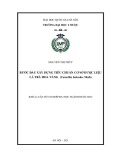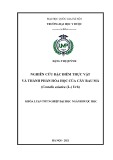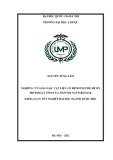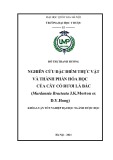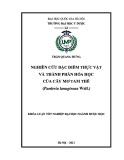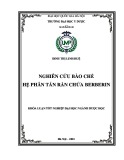
Genome Biology 2007, 8:R138
comment reviews reports deposited research refereed research interactions information
Open Access
2007Oguraet al.Volume 8, Issue 7, Article R138
Research
Extensive genomic diversity and selective conservation of
virulence-determinants in enterohemorrhagic Escherichia coli
strains of O157 and non-O157 serotypes
Yoshitoshi Ogura*†, Tadasuke Ooka†, Asadulghani†, Jun Terajima‡, Jean-
Philippe Nougayrède§, Ken Kurokawa¶, Kousuke Tashiro¥, Toru Tobe#,
Keisuke Nakayama†, Satoru Kuhara¥, Eric Oswald§, Haruo Watanabe‡ and
Tetsuya Hayashi*†
Addresses: *Division of Bioenvironmental Science, Frontier Science Research Center, University of Miyazaki,5200 Kihara, Kiyotake, Miyazaki,
889-1692, Japan. †Division of Microbiology, Department of Infectious Diseases, Faculty of Medicine, University of Miyazaki,5200 Kihara,
Kiyotake, Miyazaki, 889-1692, Japan. ‡Department of Bacteriology, National Institute for Infectious Diseases, 1-23-1 Toyama, Shinjuku, Tokyo,
162-8640, Japan. §UMR1225, INRA-ENVT, 23 chemin des Capelles, 31076 Toulouse, France. ¶Laboratory of Comparative Genomics, Graduate
School of Information Science, Nara Institute of Science and Technology, 8916-5 Takayama, Ikoma, Nara, 630-0192, Japan. ¥Laboratory of
Molecular Gene Technics, Department of Genetic Resources Technology, Faculty of Agriculture, Kyushu University, 6-10-1 Hakosaki, Fukuoka,
812-8581, Japan. #Division of Applied Bacteriology, Graduate School of Medicine, Osaka University, 2-2 Yamadaoka, Suita, Osaka, 565-0871,
Japan.
Correspondence: Tetsuya Hayashi. Email: thayash@med.miyazaki-u.ac.jp
© 2007 Ogura et al.; licensee BioMed Central Ltd.
This is an open access article distributed under the terms of the Creative Commons Attribution License (http://creativecommons.org/licenses/by/2.0), which
permits unrestricted use, distribution, and reproduction in any medium, provided the original work is properly cited.
Genomic diversity of enterohemorrhagic Escherichia coli strains<p>Comparing the genomes of O157 and non-O157 enterohemorrhagic <it>Escherichia coli </it>(EHEC) strains reveals the selective con-servation of a large number of virulence determinants.</p>
Abstract
Background: Enterohemorrhagic Escherichia coli (EHEC) O157 causes severe food-borne illness in
humans. The chromosome of O157 consists of 4.1 Mb backbone sequences shared by benign E. coli K-12,
and 1.4 Mb O157-specific sequences encoding many virulence determinants, such as Shiga toxin genes (stx
genes) and the locus of enterocyte effacement (LEE). Non-O157 EHECs belonging to distinct clonal
lineages from O157 also cause similar illness in humans. According to the 'parallel' evolution model, they
have independently acquired the major virulence determinants, the stx genes and LEE. However, the
genomic differences between O157 and non-O157 EHECs have not yet been systematically analyzed.
Results: Using microarray and whole genome PCR scanning analyses, we performed a whole genome
comparison of 20 EHEC strains of O26, O111, and O103 serotypes with O157. In non-O157 EHEC
strains, although genome sizes were similar with or rather larger than O157 and the backbone regions
were well conserved, O157-specific regions were very poorly conserved. Around only 20% of the O157-
specific genes were fully conserved in each non-O157 serotype. However, the non-O157 EHECs
contained a significant number of virulence genes that are found on prophages and plasmids in O157, and
also multiple prophages similar to, but significantly divergent from, those in O157.
Conclusion: Although O157 and non-O157 EHECs have independently acquired a huge amount of
serotype- or strain-specific genes by lateral gene transfer, they share an unexpectedly large number of
virulence genes. Independent infections of similar but distinct bacteriophages carrying these virulence
determinants are deeply involved in the evolution of O157 and non-O157 EHECs.
Published: 10 July 2007
Genome Biology 2007, 8:R138 (doi:10.1186/gb-2007-8-7-r138)
Received: 7 March 2007
Revised: 6 June 2007
Accepted: 10 July 2007
The electronic version of this article is the complete one and can be
found online at http://genomebiology.com/2007/8/7/R138

R138.2 Genome Biology 2007, Volume 8, Issue 7, Article R138 Ogura et al. http://genomebiology.com/2007/8/7/R138
Genome Biology 2007, 8:R138
Background
Escherichia coli is a commensal intestinal inhabitant of ver-
tebrates and rarely cause diseases except in compromised
hosts. Several types of strains, however, cause diverse intesti-
nal and extra-intestinal diseases in healthy humans and ani-
mals by means of individually acquired virulence factors [1].
Enterohemorragic E. coli (EHEC) is one of the most devastat-
ing pathogenic E. coli, which can cause diarrhea and hemor-
rhagic colitis with life-threatening complications, such as
hemolytic uremic syndrome (HUS) [2]. Shiga toxin (Stx) is
the key virulence factor responsible for the induction of hem-
orrhagic colitis with such complications [3]. In addition, typ-
ical EHEC strains possess a pathogenicity island called 'the
locus of enterocyte effacement (LEE)', which encodes a set of
proteins constituting type III secretion system (T3SS)
machinery. The LEE also encodes several effector proteins
secreted by the T3SS, and an adhesin called intimin (encoded
by the eaeA gene). The system confers on the bacteria the
ability to induce attaching and effacing (A/E) lesions on the
host colonic epithelial cells, enabling it to colonize tightly at
the lesions [4]. The LEE has also been found in enteropatho-
genic E. coli (EPEC), which cause severe diarrhea in infants,
and in several other animal pathogens, including Citrobacter
rodentium and rabbit EPEC [5,6]. It is also known that EHEC
strains harbor a large plasmid encoding several virulence fac-
tors, such as enterohemolysin [2].
Our previous genome sequence comparison of O157:H7
strain RIMD 0509952 (referred to as O157 Sakai) with the
benign laboratory strain K-12 MG1655 revealed that the O157
Sakai chromosome is composed of 4.1 Mb sequences con-
served in K-12, and 1.4 Mb sequences absent from K-12
(referred to as the backbone and S-loops, respectively) [7,8].
Importantly, most of the large S-loops are prophages and
prophage-like elements, and O157 Sakai contains 18
prophages (Sp1-Sp18) and 6 prophage-like elements (SpLE1-
SpLE6; these elements contain phage integrase-like genes but
no other phage-related genes). These Sps and SpLEs carry
most of the virulence-related genes of O157, including the stx
genes (stx1AB on Sp15 and stx2AB on Sp5). The LEE patho-
genicity island corresponds to SpLE4. Of particular impor-
tance is that, in addition to 7 LEE-encoded effectors, 32
proteins encoded in non-LEE loci have been identified as
effectors secreted by LEE-encoded T3SS (non-LEE effectors)
[9-15]. Among these, TccP has already been shown to play a
pivotal role for the induction of A/E lesions in EHEC [16,17].
Others are also suspected to be involved in EHEC pathogene-
sis. Nearly all of these non-LEE effectors are encoded on the
Sps and SpLEs [15].
We have recently performed a whole genome comparison of
eight O157 strains by whole genome PCR scanning (WGP-
Scanning) and comparative genomic hybridization (CGH)
using O157 oligoDNA microarray analysis [18,19]. These
analyses revealed that O157 strains are significantly divergent
in the genomic structure and gene repertoire. In particular,
Sp and SpLE regions exhibit remarkable diversity. We identi-
fied about 400 genes that are variably present in the O157
strains. They include several virulence-related genes, sug-
gesting that some level of strain-to-strain variations in the
potential virulence exist among O157 strains.
Although numerous EHEC outbreaks have been attributed to
strains of the O157 serotype (O157 EHEC), it has increasingly
been more frequently recognized that EHEC strains belong-
ing to a wide range of other serotypes also cause similar gas-
trointestinal diseases in humans. Among these non-O157
EHECs, O26, O111, and O103 are the serotypes most fre-
quently associated with human illness in many countries
[20]. By multilocus sequencing typing (MLST) of housekeep-
ing genes, Reid et al. [21] have shown that these non-O157
EHEC strains belong to clonal groups distinct from O157
EHEC. Based on this finding, they proposed a 'parallel' evolu-
tion model of EHEC; each EHEC lineage has independently
acquired the same major virulence factors, stx, LEE, and plas-
mid-encoded enterohemolysin [21]. However, our knowledge
on the prevalence of virulence factors among non-O157 EHEC
strains is very limited. Many other virulence factors found on
the O157 genome, such as fimbrial and non-fimbrial adhes-
ins, iron uptake systems, and non-LEE effectors, are also
thought to be required for the full virulence of EHEC, but
their prevalence among non-O157 EHEC strains has not yet
been systematically analyzed. Differences (or conservation)
in the genomic structure between O157 and non-O157 EHEC
strains are also yet to be determined.
In this study, we selected 20 non-O157 EHEC strains, 8 of
which belong to O26, six to O111, and six to O103 serotypes,
and performed a whole genome comparison with O157 EHEC
strains by O157 oligoDNA microarray and WGPScanning.
Our data indicate that the backbone regions are highly con-
served also in non-O157 EHEC strains, while most S-loops are
very poorly conserved. Among the genes on S-loops, only
8.5% were detected in all the EHEC strains examined, and
around 20% were fully conserved in each non-O157 serotype.
Besides, we found that the genome sizes of non-O157 EHEC
strains are similar or rather larger than those of O157 strains,
indicating that non-O157 EHEC strains have a huge amount
of serotype- or strain-specific genes. Interestingly, virulence-
related genes, particularly those for non-LEE effectors and
non-fimbrial adhesions, were relatively well conserved in the
non-O157 EHEC strains.
Results
Phylogeny and other features of non-O157 EHEC
strains
EHEC strains used in this study were isolated from patients in
Japan, Italy, or France (Table 1). The XbaI digestion patterns
examined by pulsed field gel electrophoresis (PFGE) showed
that the genomic DNA of EHEC strains is significantly diver-
gent (Additional data file 1), while all possess stx1 and/or stx2

http://genomebiology.com/2007/8/7/R138 Genome Biology 2007, Volume 8, Issue 7, Article R138 Ogura et al. R138.3
comment reviews reports refereed researchdeposited research interactions information
Genome Biology 2007, 8:R138
genes, and the eaeA gene encoding intimin (see 'Detection
and subtyping of stx and eaeA genes' in Materials and meth-
ods). The results of the fluorescent actin staining (FAS) assay
[22] indicated that all strains are potentially capable of induc-
ing A/E lesions except for O111 strain 1. The efficiency, how-
ever, somewhat varied from strain-to-strain (data not
shown).
The MLST analysis using seven housekeeping genes (aspC,
clpX, fadD, icdA, lysP, mdh, and uidA) indicated that strains
belonging to the O157, O26, O111, and O103 serotypes were
clustered into three different phylogenic groups (O26 and
O111 strains were clustered together; Additional data file 2).
This result is basically consistent with those from previous
MLST analyses using different genetic loci [21,23]. The type
of intimin was classified as γ1, β1, γ2, and ε for O157, O26,
O111, and O103, respectively.
Chromosome sizes and plasmid profiles
The I-CeuI digestion of chromosomal DNA yielded seven
fragments in 26 out of 29 EHEC strains (data not shown).
Because I-CeuI specifically cleaves a 19 base-pair sequence in
the 23S ribosomal RNA gene, it demonstrated that these
strains have seven copies of the ribosomal operon (rrn), as in
K-12 and O157. Estimated chromosome sizes of these strains
were all much larger than that of K-12, with diverged sizes
ranging from 5,102 to 5,945 kb (Table 2). O111 and O103
strains contained slightly smaller chromosomes than O157
strains. In contrast, most O26 strains contained relatively
larger chromosomes. We could not estimate the chromosome
sizes in two O157 strains (2 and 9) and one O103 strain (4),
because all or the largest fragments repeatedly exhibited
smear patterns.
Plasmid profiles indicated that all but one O157 strain contain
one large plasmid of a similar size (Table 2; Additional data
file 3). All of the non-O157 EHEC strains also contained at
least one large plasmid except for O26 strain 1 (one small
plasmid was present) and O103 strain 2 (no plasmid was
detected). Several O26 and O111 strains possessed two or
three large plasmids. The estimated total genome sizes of
EHEC strains ranged from 5.27 Mb to 6.21 Mb.
Table 1
EHEC strains tested in this study
No. Strain Serotype Source Country Symptoms Shiga toxin Intimin type
Sakai RIMD 0509952 O157:H7 Human Japan (Sequenced strain) stx1, stx2 γ1
O157 #2 980938 O157:H7 Human Japan Abdominal pain, fever stx1, stx2vh-b γ1
O157 #3 980706 O157:H7 Human Japan Diarrhea, bloody stool, abdominal pain stx1, stx2, stx2vh-a γ1
O157 #4 990281 O157:H7 Human Japan Asymptomatic carrier stx2vh-a γ1
O157 #5 980551 O157:H7 Human Japan Diarrhea, bloody stool stx1, stx2 γ1
O157 #6 990570 O157:H7 Human Japan Diarrhea, bloody stool, fever stx2vh-a γ1
O157 #7 981456 O157:H7 Human Japan Diarrhea stx1, stx2vh-a γ1
O157 #8 982243 O157:H- Human Japan Diarrhea, fever stx1, stx2vh-a γ1
O157 #9 981795 O157:H7 Human Japan Diarrhea, bloody stool, abdominal pain stx1, stx2 γ1
O26 #1 11044 O26:H11 Human Japan Diarrhea, bloody stool stx1 β1
O26 #2 11368 O26:H11 Human Japan Diarrhea stx1 β1
O26 #3 11656 O26:H- Human Japan Diarrhea, fever stx1 β1
O26 #4 12719 O26:H- Human Japan Diarrhea stx1 β1
O26 #5 12929 O26:H- Human Japan Diarrhea stx1 β1
O26 #6 13065 O26:H11 Human Japan Diarrhea, abdominal pain stx1 β1
O26 #7 13247 O26:H11 Human Japan Diarrhea, abdominal pain stx1 β1
O26 #8 ED411 O26:H11 Human Italy stx2 β1
O111 #1 11109 O111:H- Human Japan Diarrhea, abdominal pain stx1 γy
O111 #2 11128 O111:H- Human Japan Diarrhea, bloody stool stx1, stx2 γy
O111 #3 11619 O111:H- Human Japan Asymptomatic carrier stx1, stx2 γy
O111 #4 11788 O111:H- Human Japan Diarrhea stx1 γy
O111 #5 13369 O111:H- Human Japan Diarrhea, abdominal pain, bloody stool stx1 γy
O111 #6 ED71 O111:H- Human Italy stx1 γy
O103 #1 10828 O103:H2 Human Japan Diarrhea, abdominal pain stx1 ε
O103 #2 11117 O103:H2 Human Japan Diarrhea, fever stx1 ε
O103 #3 11711 O103:H2 Human Japan Diarrhea, fever stx1 ε
O103 #4 11845 O103:H2 Human Japan Diarrhea, abdominal pain stx1 ε
O103 #5 12009 O103:H2 Human Japan Diarrhea, bloody stool stx1, stx2 ε
O103 #6 PMK5 O103:H2 Human France HUS stx1 ε

R138.4 Genome Biology 2007, Volume 8, Issue 7, Article R138 Ogura et al. http://genomebiology.com/2007/8/7/R138
Genome Biology 2007, 8:R138
Table 2
Estimated genome sizes of EHEC strains
Estimated sizes (kb)
K-12* Sakai* O157 O26 O111 O103
In silico Exp In silico Exp#2#3#4#5#6#7#8#9#1#2#3#4#5#6#7#8#1#2#3#4#5#6#1#2#3#4#5#6
I-ceuI-fragmant no.
1 2,498 2,686 3,216 3,191 ND 3,342 3,325 3,277 3,226 3,358 3,325 ND 3,185 3,386 3,345 3,414 3,571 3,513 3,630 3,374 2,941 3,044 2,912 2,898 2,884 2,814 2,911 2,959 3,291 ND 2,923 2,961
2 698 687 712 720 722 722 713 713 693 718 708 ND 777 777 782 823 751 787 782 734 824 803 808 808 803 808 889 923 941 872 883 761
3 657 649 709 707 698 679 679 657 670 679 674 ND 746 751 751 741 720 720 720 720 698 698 698 693 693 698 709 720 797 714 756 712
4 521 525 579 591 574 574 574 574 574 582 574 ND 382 382 458 382 385 385 385 537 519 519 519 519 519 519 517 517 346 521 362 514
5 131 127 144 142 144 142 179 142 142 144 144 ND 295 295 301 295 298 298 298 143 140 137 137 135 135 135 137 136 317 133 320 136
6 94 83 96 8989888888918889ND97979697979797999292929186889810197989793
7 41 41 41 4143424242424242ND4141414141413341414141414141414343434343
Chromosome total 4,640 4,797 5,498 5,480 ND 5,589 5,600 5,492 5,437 5,610 5,556 ND 5,524 5,731 5,773 5,794 5,864 5,842 5,945 5,647 5,256 5,334 5,207 5,185 5,160 5,102 5,303 5,398 5,833 ND 5,384 5,220
Plasmid no.
1 93 93 93 93 101 93 93 93 93 ND 7 85 91 98 98 98 98 137 77 205 125 81 87 155 74 ND 89 89 72 52
2 3 3 6 7 3 ND 63 65 73 49 91 107 98 77 51 47 7 ND 72 63
33ND6476825787775ND
4ND 4 7 3 8 5 5 ND
5ND 7 ND
Plasmid total - - 96 96 93 93 101 93 102 99 95 ND 7 158 156 175 154 98 263 273 77 395 208 144 145 166 74 ND 160 152 72 52
Genome total 4,640 4,797 5,594 5,576 NE 5,682 5,701 5,585 5,539 5,709 5,651 ND 5,530 5,889 5,929 5,969 6,018 5,940 6,208 5,920 5,333 5,729 5,415 5,328 5,305 5,268 5,377 ND 5,993 ND 5,456 5,273
*Lengths of each band estimated from experimental data and in silico analyses are shown. ND, not detected.

http://genomebiology.com/2007/8/7/R138 Genome Biology 2007, Volume 8, Issue 7, Article R138 Ogura et al. R138.5
comment reviews reports refereed researchdeposited research interactions information
Genome Biology 2007, 8:R138
Overview of the CGH analysis of non-O157 EHEC
We analyzed the gene contents of non-O157 EHEC strains by
using the O157 oligoDNA microarray, and compared the
results with those of O157 strains in our previous report [18]
(Figures 1 and 2). More Sakai genes were absent from the
non-O157 EHEC strains. In O157 strains, the absent genes
were found mostly in Sp and SpLE regions, but in non-O157
EHEC strains, they were found not only in Sp and SpLE
regions but also in various S-loops. The conservation tended
to exhibit a serotype-specific pattern, but remarkable strain-
to-strain diversity was also observed in each serotype.
To more precisely analyze the CGH data, we categorized the
Sakai genes into three groups [18]. Since most Sakai genes
were represented by two oligonucleotide probes in our micro-
array, we first classified the probes into two groups by their
homologies to the K-12 genome sequence; those with ≥90%
identity into 'conserved in K-12' probes and others into
'Sakai-specific' probes. Each gene was then classified into
'conserved in K-12' genes, 'partly conserved in K-12' genes
(genes represented by one 'conserved in K-12' probe and one
'Sakai-specific' probe), or 'Sakai-specific' genes. Repeated
gene families that occurred in O157 Sakai more than once
were analyzed separately from singleton genes (see Materials
and methods for details on the classification and the presence
or absence determination).
'Conserved in K-12' singleton genes were highly conserved in
all serotypes: 3,596 (98.5%), 3,450 (94.5%), 3,331 (91.2%),
and 3,542 (97.0%) out of 3,651 genes were fully conserved in
O157, O26, O111 and O103, respectively, and 3,240 (88.7%) in
all the test strains (Figure 3; Additional data file 4). 'Sakai-
specific' singleton genes were relatively well conserved in
O157 strains, but very poorly in non-O157 EHEC strains: 741
(64.3%), 221 (19.2%), 300 (26.0%), and 231 (20.0%) out of
1,153 genes were fully conserved in O157, O26, O111, and
O103, respectively. Only 98 (8.5%) were conserved in all the
test strains.
Among the 4,905 singleton genes, 101 were categorized as
'partly conserved in K-12' genes. They included 81 genes that
are encoded on the backbone and 20 genes on S-loops or
backbone/S-loop junctions. In O157, all but 5 (95.0%) of the
'partly conserved in K-12' genes were fully conserved. In non-
O157 EHECs, however, many 'partly conserved in K-12' genes
were categorized as 'uncertain' (7 to 42 genes in each non-
O157 EHEC strain, 28 genes on average), because only one of
the two probes yielded positive results. Therefore, only 44
(43.6%), 40 (39.6%), and 58 (57.4%) were fully conserved in
O26, O111, and O103, respectively (Figure 3; Additional data
file 4). This result suggests that most of the 'partly conserved
in K-12' genes are present in the non-O157 EHEC strains but
many have significantly divergent sequences from those of
O157 Sakai.
O157 Sakai contains many repeated genes (542 out of 5,447
genes), such as transposase- and phage-related genes. They
can be grouped into 151 families. Compared with the single-
ton genes, the repeated gene families were relatively well con-
served in non-O157 EHECs. About half of the 'conserved in K-
12' repeated gene families (11 out of the 23 families (47.8%))
were fully conserved in all the test strains, and 81 (63.3%), 74
(57.8%), 60 (46.9%), and 77 (60.2%) out of the 128 'Sakai-
specific' repeated gene families were fully conserved in O157,
O26, O111, and O103, respectively (Figure 3; Additional data
file 4). Because most of the repeated genes were from lambda-
like prophages and IS elements [8,18], this result indicates
that non-O157 EHEC strains also contain multiple lambda-
like prophages and IS elements very similar to those found in
O157 Sakai.
Absent 'conserved in K-12' genes in EHEC strains
Among the 3,651 'conserved in K-12' singleton genes, 224
(6.1%) were absent in at least one test strain. These genes
were found to be absent more frequently in non-O157 EHEC
strains than in O157 strains: 75 genes (2.1%) in O26 strains,
184 (5.0%) in O111, and 61 (1.7%) in O103, while only 37
(1.0%) in O157 (here we counted only the genes that were
judged as 'absent' in at least one strain; therefore, these
results do not include the genes that were 'uncertain' in some
strains but 'absent' in no strain). These genes were dispersed
on the chromosome and belonged to various functional cate-
gories (Additional data file 5); but as expected, none of them
was listed as essential, either in the 'profiling of E. coli chro-
mosome' (PEC) database [24] or in a systematic single-gene
deletion study of E. coli K-12 [25]. We also identified 46, 83,
and 30 'conserved in K-12' singleton genes that are fully
absent in O26, O111, and O103, respectively. Among these, 22
genes, which are located in 12 different chromosomal loci,
were absent in all non-O157 EHEC strains, and 10, 44, and 3
genes were specifically missing in O26, O111, and O103,
respectively.
Conservation of 'Sakai-specific' genes in non-O157
EHEC strains
We categorized 'Sakai-specific' singleton genes according to
the COG (clusters of orthologous groups of proteins) classifi-
cation [26], and analyzed the gene conservation of each func-
tional category (Figure 4). In O157, most genes were well
conserved in all categories. Many genes for 'replication,
recombination and repair' and for 'transcription' were varia-
bly present among O157 strains, but most of them were on Sps
and SpLEs. In the non-O157 serotypes, however, the 'Sakai-
specific' singleton genes belonging to almost every COG func-
tional category exhibited poor conservation (many were clas-
sified as 'Fully absent'). The level of conservation was similar
to that observed for the four sequenced pathogenic E. coli
strains of different pathotypes [27-30] (Additional data file
4).



